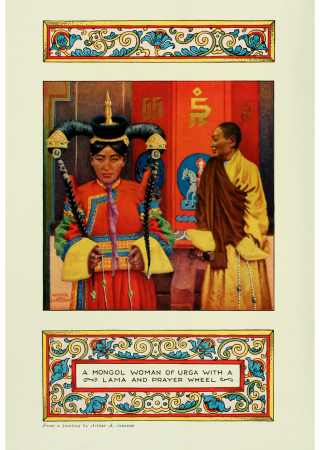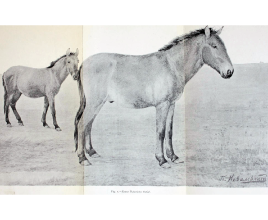Discovery of Cent. and E. Asia
- ...Nikolaj Mikhaylovich Przhevalsky was the first European to describe the wild horse, which was named the Przhevalsky horse in his honour?
- ... Przhevalsky's name has been given to a city, a mountain range, a glacier in Altaj, a cape and peninsula in the Kuril Islands, and many animals and plants?
- ... Przhevalsky died aged 40 of typhoid fever?
- ... Karakol, where Przhevalsky died in 1888, was renamed Przhevalsky in 1893?
- ... Issyk-kul Lake in Kyrgyzstan, visited by Przhevalsky, is one of the largest mountain lakes in the world?
- ... the Tian Shan mountain range is the sixth highest in the world?
- ... Przhevalsky was the first to investigate Lake Kukunor, the largest saline lake in the world, with a length of 105 kilometres and width of 65 kilometres?
- ... eastern Turkestan, where Przhevalsky's expedition travelled, is in the region known as Dzungaria: currently the Xinjiang Uyghur Autonomous Region, the largest province in communist China?
- Nikolaj Mikhaylovich Przhevalsky lived 9 years and 3 months in central Asia, travelled 33,000 kilometers, measured 900 heights barometrically and 63 locations astronomically. His investigations covered an enormous area, from Pamir to Great Chang'an, from Altaj to central Tibet, and he was the first European to enter many these places in these regions.
- His expeditions place him amongst the greatest travelers of all time.
- The expeditions lasted from 1870 to 1888.
- During the three-year Mongolian expedition, Przhevalsky travelled with three guides over 12,000 kilometers and explored 7,000 square miles.
- In 1879 and 1880, he undertook the Tibetan expedition, and with 13 guides, travelled over 8,000 kilometers.
- During his last expedition with 21 guides, he travelled 7,800 kilometers.
In November of 1870, Przhevalsky set out on his journey to central Asia. Starting from Kacha, he travelled across Mongolia to Peking, investigated the Suma-Chodi mountain range, the In-Shen and the watercourse of the Yellow river. He then crossed the Alashan desert and Alashan mountains. In 1872 he continued across Köke-núr to northern Tibet, and travelling via the central part of the Gobi desert and Urgu (today's Ulanbator) he returned to Kacha. His second journey took place in 1876-1877, across eastern Turkestan to the shifting lake Lob-núr, supposedly not visited by any European since Marco Polo. From there he continued to Altyn-Tagh, across the Tibetan highlands in the Tarim basin. The discovery of Altyn-Tagh moved the boundaries of the Tibetan plateau 300 kilometres north. During his third trip, 1879-1880, he got to Lake Kukunor, then Köke-núr and Si-Ning. Again, he returned home via the Gobi desert and Urgu to Kacha. His last trip was from 1883-1885. He set out from Kacha across the Gobi desert to the eastern side of the Tian Shan mountain range, explored the source of the Yangtze River, discovered Džarin-núr and Orin-núr lakes, went back to Kukunor across the Taklamakan desert, and crossed the Tian Shan mountains to get back to Karakol and Issyk-kul Lake. This was his most important journey. In 1888 he prepared another expedition. He set out from Samarkand towards the Russian-Chinese border, but fell ill on the Chu River and died in Karakol.


